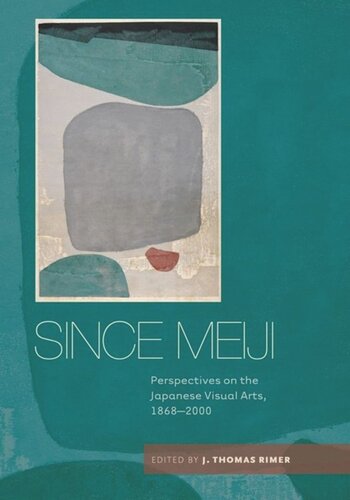

Most ebook files are in PDF format, so you can easily read them using various software such as Foxit Reader or directly on the Google Chrome browser.
Some ebook files are released by publishers in other formats such as .awz, .mobi, .epub, .fb2, etc. You may need to install specific software to read these formats on mobile/PC, such as Calibre.
Please read the tutorial at this link: https://ebookbell.com/faq
We offer FREE conversion to the popular formats you request; however, this may take some time. Therefore, right after payment, please email us, and we will try to provide the service as quickly as possible.
For some exceptional file formats or broken links (if any), please refrain from opening any disputes. Instead, email us first, and we will try to assist within a maximum of 6 hours.
EbookBell Team

0.0
0 reviewsResearch outside Japan on the history and significance of the Japanese visual arts since the beginning of the Meiji period (1868) has been, with the exception of writings on modern and contemporary woodblock prints, a relatively unexplored area of inquiry. In recent years, however, the subject has begun to attract wide interest. As is evident from this volume, this period of roughly a century and a half produced an outpouring of art created in a bewildering number of genres and spanning a wide range of aims and accomplishments. Since Meiji is the first sustained effort in English to discuss in any depth a time when Japan, eager to join in the larger cultural developments in Europe and the U.S., went through a visual revolution. Indeed, this study of the visual arts of the nineteenth and twentieth centuries suggests a fresh history of modern Japanese culture—one that until now has not been widely visible or thoroughly analyzed outside that country.
In this extensive collection, which includes some 190 black-and-white and color reproductions, scholars from Japan, Europe, Australia, and America explore an impressive array of subjects: painting, sculpture, prints, fashion design, crafts, and gardens. The works discussed range from early Meiji attempts to create art that referenced Western styles to postwar and contemporary avant-garde experiments. There are, in addition, substantive investigations of the cultural and intellectual background that helped stimulate the creation of new and shifting art forms, including essays on the invention of a modern artistic vocabulary in the Japanese language and the history of art criticism in Japan, as well as an extensive account of the career and significance of perhaps the best-known Japanese figure concerned with the visual arts of his period, Okakura Tenshin (1862–1913), whose Book of Tea is still widely read today.
Taken together, the essays in this volume allow readers to connect ideas and images, thus bringing to light larger trends in the Japanese visual arts that have made possible the vitality, range, and striking achievements created during this turbulent and lively period.
Contributors: Stephen Addiss, Chiaki Ajioka, John Clark, Ellen Conant, Mikiko Hirayama, Michael Marra, Jonathan Reynolds, J. Thomas Rimer, Audrey Yoshiko Seo, Eric C. Shiner, Lawrence Smith, Shuji Tanaka, Reiko Tomii, Mayu Tsuruya, Toshio Watanabe, Gennifer Weisenfeld, Bert Winther-Tamaki, Emiko Yamanashi.